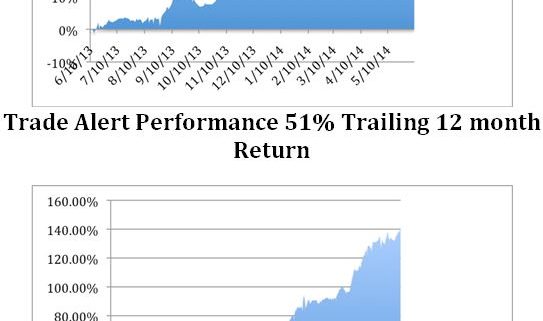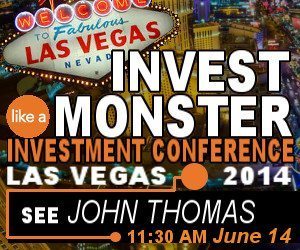The industry beating performance of the Mad Hedge Fund Trader?s Trade Alert Service has punched through to a new all time high almost every day for the past ten days.
The total return for my followers so far in 2014 has reached 17.82%, compared to a far more modest 4.6% for the Dow Average during the same period. June so far is up a healthy 2.32%.
I managed to pull this off during some of the most difficult trading conditions in market history. Turnover across all asset classes is hitting decade lows (see chart below), and volatility has crashed through the floor.
The three and a half year return is now at an amazing 140.32%, compared to a far more modest increase for the Dow Average during the same period of only 38%.
That brings my averaged annualized return up to 40.1%. Not bad in this zero interest rate world. It appears better to reach for capital gains than the paltry yields out there.
This has been the profit since my groundbreaking trade mentoring service was first launched in 2010. Thousands of followers now earn a full time living solely from my Trade Alerts, a development of which I am immensely proud of.
Like most of the industry, I expected May and June to be poor months for risk assets. The market has had a tremendous run over the last two years, and the spring historically heralds a period of seasonal weakness.
Wrong!
One of the toughest things to do in this business is to admit you?re wrong, and then execute an immediate risk reversal in your portfolio.
In the end, the failure of the market to fall meant that it could only go up. We got additional help from month end window dressing, calming events in the Ukraine, and a 7:1 share split at Apple.
What really sent stocks off to the races was the European Central Bank?s surprise move to implement negative interest rates for overnight deposits and expansion of quantitative easing. The moves should add 0.5% to global GDP growth this year.
That?s all I needed to pile into long positions in Caterpillar (CAT), IBM (IBM), Microsoft (MSFT), and JP Morgan (JPM). The move also enabled me to take profits in Apple (AAPL) and cover my short in the Japanese yen and the Treasury bond market (TLT). I continue to run an existing long on Google (GOOG).
Quite a few followers were able to move fast enough to cash in on the move. To read the plaudits yourself, please go to my Testimonials Page. They are all real, and new ones come in almost every day.
My esteemed colleague, Mad Day Trader Jim Parker, was no slouch either. He slapped on a short in the euro (FXE) and a long in the grains (JJG), both of which immediately turned profitable.
What would you expect with a combined 85 years of market experience between the two of us? Followers are laughing all the way to the bank.
Don?t forget that Jim clocked an amazing 2013 with a staggering 374% trading profit. That was just for an eight-month year!
The Opening Bell with Jim Parker, a quickie but insightful webinar giving followers an instant snapshot of the market opening every day, has been an overwhelming success. Many customers have already reported dramatic improvements in their trading results.
Watch this space, because the crack team at Mad Hedge Fund Trader has more new products and services cooking in the oven. You?ll hear about them as soon as they are out of beta testing.
Our business is booming, so I am plowing profits back in to enhance our added value for you. Next out will be the Mad Hedge Fund Trader Channel on YouTube that will enable me to post videos from my frequent travels around the world.
The coming year promises to deliver a harvest of new trading opportunities. The big driver will be a global synchronized recovery that promises to drive markets into the stratosphere by the end of 2014.
Global Trading Dispatch, my highly innovative and successful trade-mentoring program, earned a net return for readers of 40.17% in 2011, 14.87% in 2012, and 67.45% in 2013.
Our flagship product,?Mad Hedge Fund Trader PRO, costs $4,500 a year. It includes my Global Trading Dispatch?(my trade alert service and daily newsletter). You get a real-time trading portfolio, an enormous research database, and live biweekly strategy webinars. You also get Jim Parker?s?Mad Day Trader?service and?The Opening Bell with Jim Parker.
To subscribe, please go to my website at www.madhedgefundtrader.com, find the ?Global Trading Dispatch? or ?Mad Hedge Fund Trader PRO? box on the right, and click on the blue ?SUBSCRIBE NOW? button.
















